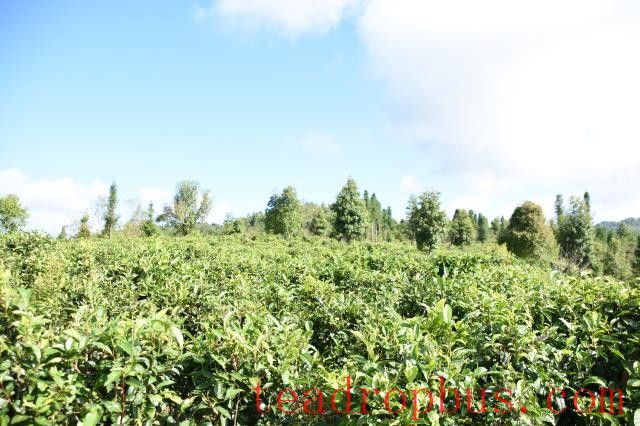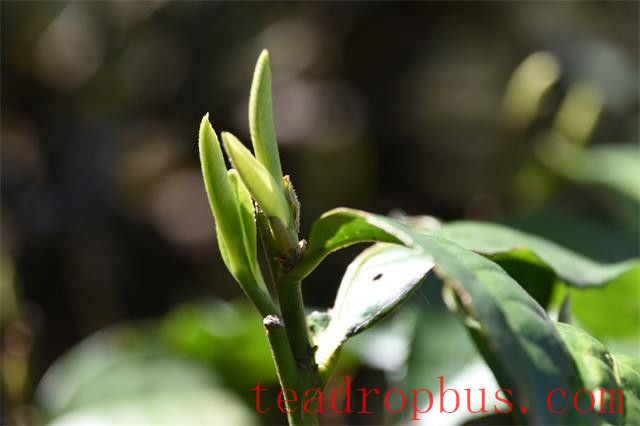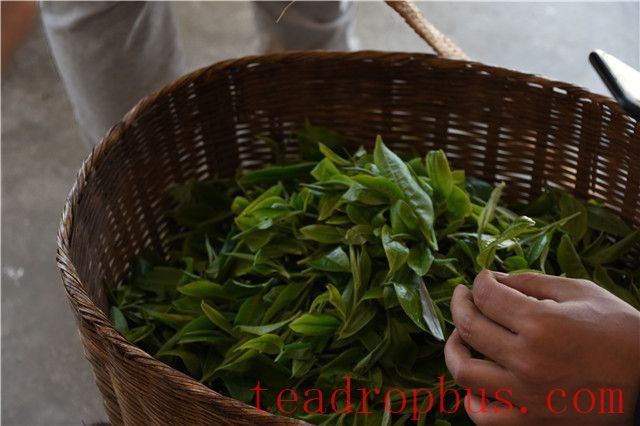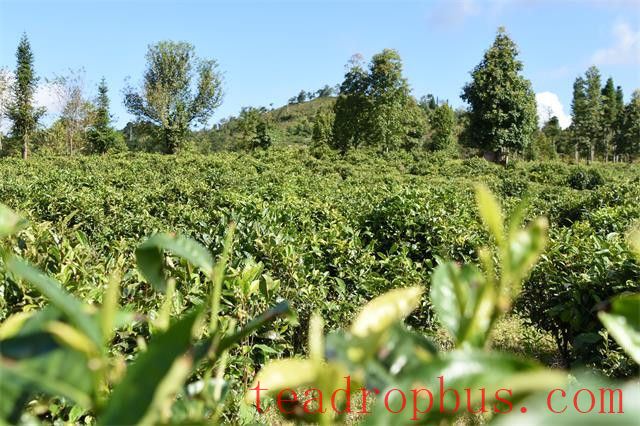Dian Hong Tea is primarily produced in southern and southwestern Yunnan Province, in areas such as Lincang, Baoshan, Fengqing, Xishuangbanna, Dehong, and other locations. Dian Hong tea is made through fermentation and has a mild character. The production process consists of five steps: picking, withering, rolling, fermentation, and drying. The dry tea is characterized by its robust and tightly bound appearance, prominent golden tips, bright red liquor, rich and mellow taste, and fragrant aroma.

The distribution of Dian Hong tea origins
One: Mangku Large-Leaf Variety
Native to Mangku Town, Shuangjiang County, Yunnan Province, it was recognized as a national superior variety by the National Tea Tree Variety Approval Committee in 1985.
Mangku faces the Mangku Great Snow Mountain, which contains excellent large-leaf resources and is known as the gene bank of Mangku large-leaf varieties. Teas made from Mangku large-leaf varieties have strong budding capacity, high tenderness, high yield, and spring tea shoots containing 3.1% amino acids, 33.67% polyphenols, and 18.22% total catechins. The teas made from these leaves have a fresh and intense aroma, a robust and refreshing taste, and a bright red liquor.
Two: Menghai Large-Leaf Variety
Native to Nannuoshan, Menghai County, Yunnan Province, it was recognized as a national superior variety by the National Tea Tree Variety Approval Committee in 1985.
Menghai tea area provides high-quality raw materials for Pu'er tea and is also an excellent source for Black Tea. It relies on the ancient tree resources of the new six major tea mountains—Bulang, Nannuo, Bada, Hekai, Mengsong, and Nanqiao. These teas are not only rich in quality but also have a high aroma and strong flavor, with a fresh and refreshing taste!

Three: Fengqing Large-Leaf Variety
Native to Fengqing County, Yunnan Province, Fengqing County has the most outstanding black tea resources and is known as the capital of Dian Hong. It is also the first place to produce Dian Hong using Yunnan large-leaf varieties. Among them, Xiangzhuqing, Lushi, and Xiaowan Town are the most famous, with the tea ancestor Jinxiu from Xiaowan Town being the most renowned. The black tea produced in Fengqing has a huge output and good quality, renowned for its high and long-lasting aroma, robust and refreshing taste!
Four: Tuantian Large-Leaf Variety
Produced in Tuantian, Tengchong County, Yunnan Province, this variety also belongs to the large-leaf category. The tea made from this variety has a full and robust taste.
Five: Bamboo Leaf Clear Tea
Produced in Monga, Luxi County, Yunnan Province, this variety is rare and not widely distributed. It is suitable for making black tea and Pu'er tea. The black tea made from this variety has a clear and high aroma, a robust and refreshing taste.
Six: Winter Melon Forest Tea
Produced in Yun County, Lincang City, Yunnan Province, the black tea made from this variety has a tight and compact appearance with golden tips visible, a pleasant and refreshing taste, and a rich and lingering aroma.

Seven: Dasi Cong Tea
Produced in Fengqing County, Yunnan Province, similar to the Fengqing Large-Leaf Variety!
Eight: Nanjian Wuliang Large-Leaf Variety
Produced in Nanjian County, Dali, Yunnan Province, this variety belongs to the Yunnan large-leaf category and is suitable for making black tea!
Nine: Qingfeng
Origin and Distribution: Introduced and cultivated from the Qingfeng Tea Field in Mouding County by the Chuxiong City Tea and Mulberry Station in Yunnan Province, derived from the Shuangjiang Mangku Large-Leaf Variety. It is mainly grown and promoted in various tea-producing counties in Chuxiong Prefecture!
Dian Hong tea is produced in the southern and southwestern parts of Yunnan Province, including over 20 counties across six prefectures: Lincang, Baoshan, Yun County, Changning, Fengqing, Xishuangbanna, Dehong, and Honghe. According to geographical location, Yunnan can be divided into three tea regions: Western Yunnan, Southern Yunnan, and Northeastern Yunnan. Dian Hong is primarily produced in the Western Yunnan and Southern Yunnan natural zones. In the Western Yunnan tea region, which includes Lincang, Baoshan, Dehong, and Dali prefectures, the tea-growing area accounts for 52.2% of the province's total, and the production volume makes up 65.5% of the provincial total. This region is the main production area for Dian Hong, with counties like Fengqing, Yun County, Shuangjiang, Lincang, and Changning accounting for over 90% of Dian Hong production.

The Southern Yunnan tea region, where tea originated, encompasses Simao, Xishuangbanna, Wenshan, and Honghe prefectures, covering 32.7% of the province's area and producing 30.8% of the provincial output. The Dian Hong production area features undulating hills, with an average altitude above 1,000 meters. It has a subtropical climate with an annual average temperature of 18 to 22°C and a significant difference between day and night temperatures. Annual precipitation ranges from 1,200 to 1,700 millimeters, with a climate characterized by fog covering the ground in the early morning and evening, even on sunny days, and clouds shrouding the mountains all day during rainy weather. Its dense forests, with fallen leaves and dead grass forming a deep layer of humus, result in fertile soil that supports tall tea trees with robust shoots and thick leaves, giving the tea the highest content of polyphenolic compounds and alkaloids among Chinese teas.